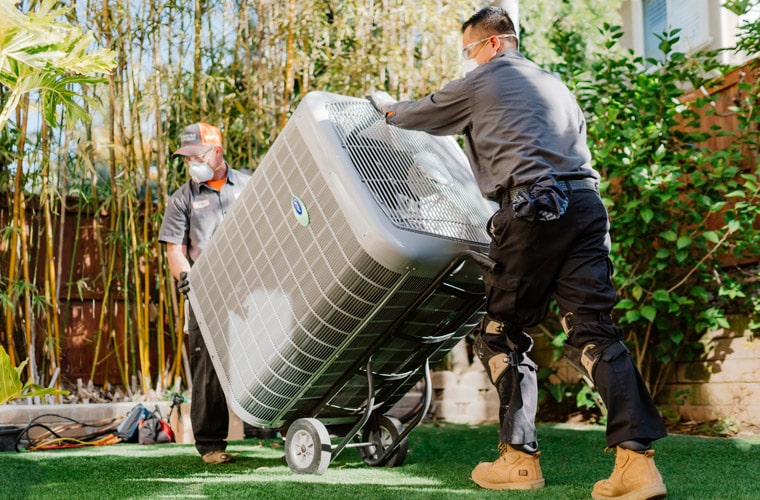Having a solid roof on your property is essential if you want a leak-free, warm and cozy home. However, roofs also experience wear and tear as they age. If you have noticed that your roof looks worn out and old, you may be wondering if it’s time for a roof replacement.
If you delay a residential roofing replacement, you may experience more severe issues with your roof down the road. Therefore, it’s essential to look out for the below warning signs that your roof is in dire need of a replacement:
Your Roof Is Old and Worn Out
The most common roofing material in the U.S is the asphalt shingle. These roofs often have an average lifespan of up to 15 years. On the other hand, tile and metal roofs often have a more extended lifespan.
You should consider a roof replacement if your roof is nearing its stipulated lifespan. Talk to your roofing expert and determine if they performed an overlaying on your roof on previous repairs. Overlaying is the process of installing new tiles on the existing roof materials.
While overlaying could help you fix your current roofing issues, it could also hide more extensive roofing problems. Ensure you contact a roofing expert to look at your roof and advise if you need repair or a replacement.
Visible Missing or Curling Tiles or Shingles
A roof protects members of your household from climatic elements. Thus, it’s constantly exposed to harsh weather conditions such as snow, rain, sun, and wind storms. These weather conditions lead to your roofing materials wearing down and eroding with time.
After your roof is exposed to harsh weather conditions for an extended period, you may notice curling, buckling, broken, and missing shingles. If you find granules and debris of the shingles or tiles in the gutter, contact a roofing expert. This could be a sign that your roof is rotting and the tiles or shingles are decaying.
When your roof has missing parts, your home’s interior is vulnerable to damage from the climatic elements.
Noticeable Damaged or Broken Flashing
Well-maintained flashing is essential to your roofing system. That’s because it keeps moisture and water droplets away from your roof’s joints. Flashing is often made from tar, metal, or roof cement, depending on your roof’s age, quality, and material.
If the flashing is degraded, damaged, or missing, your roof will be at risk of incurring water damage. That’s because the roof will be missing the protection it needs to keep away the water.
The Presence of Ice Dams
Ice dams are ridges and crests of ice that often form on the edges of your roof. The presence of ice dams usually indicates an underlying problem with your roof’s ventilation. Lack of proper ventilation often leads to the melting of the snow on your roof because of the heat emitted from your attic.
The melted snow will then go through the gutters or run down the edges of the roof, where it promptly freezes due to the cold air. Thanks to these ice dams, any additional melted snow coming down the roof’s edges will also freeze into ice.
This process often creates stagy icicles that are seen hanging on a house’s roof. If your roof is weak or old, the accumulated ice may be too heavy to carry.
Thus, your roof may cave to the pressure and tear the roofing materials apart. This allows the melting water to leak into the roof’s inner layers, resulting in water damage.
Discolored Walls and Ceilings
Discolored walls and ceilings in your home may be an indication of a roof leak. A leaking roof may cause your interior and exterior wall to have funny-looking water stains that you can’t explain. A leaking roof may also cause mysterious water dripping noises coming from the ceiling.
Ensure you carefully examine your attic’s insulation to confirm if it’s soggy. Soggy insulation could indicate that you have a roofing problem on your hand. Contact roofing services in your area to examine your roof.
Water damage often makes your roofing materials soft, which can be dangerous to you and your family. The only remedy to water damage is a roof replacement.
Unwanted Pests Occupying Your Attic or Ceiling
Have you noticed rodents and other pests such as squirrels living in your ceiling or attic? Squirrels don’t walk through the door. Thus, they may have passed through a rotting or missing component of the roof.
They could also go through a hole or eaves in your roof that resulted from roof damage or the normal wear and tear.
Animals such as raccoons, birds, bats, and possums often look for a chance to inhabit a home due to the warmth and comfort. Thus, they take advantage of any damage to your roof system to gain access to your home.
If you notice any of these animals living in your attic, ensure you call a professional contractor to examine your roof and advice if you need roofing repair or a replacement. For professional roofing repair, maintenance, and replacement services, check out https://proformanceroofs.com/locations/apopka/.
A Sagging Roof
A sagging roof is a clear indication that there is a severe underlying roof structural issue. This could indicate that there is an issue with the roof’s foundation or the attic’s decking. A sagging roof is a danger to your home and the people living under your roof.
However, it’s easier to handle a sagging roof when it’s localized. But ensure you call in an expert as soon as you notice a droop or depression on your roof.
Now You Know When It’s Time for a Residential Roofing Replacement
A roof is often one of the most forgotten components of a house. While roofs are often quite durable, especially with constant maintenance, most homeowners don’t know when it’s time for a roof repair.
Read the above signs to know when you need a residential roofing replacement. If you notice any of the signs, ensure you contact a professional roofing contractor to examine your roof as soon as possible.
Did you enjoy this post? Check out other articles on our site for more homeowner tips.


















